Why is Multilingual Website Design Crucial for Your Business?
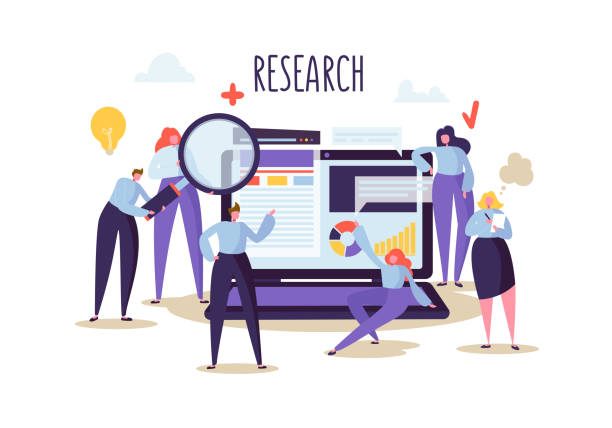
In today’s world, where geographical boundaries have become meaningless in the digital space, access to the global market and establishing communication with international audiences have gained unprecedented importance.
Multilingual website design is no longer a luxury choice, but a necessity for any business that dreams of growth and expansion beyond domestic borders.
This type of design allows you to convey your message in the native language of potential customers worldwide, which in turn leads to increased trust, improved user experience, and ultimately, significant business growth.
By having a website accessible in multiple languages, you can easily offer your products or services to new markets and capture a larger share of the global market.
This approach not only expands your customer base but also demonstrates your company’s professionalism and international vision.
In an era where competition has peaked, ignoring a large segment of the global population simply means missing out on golden opportunities.
Multilingual website design helps you not only surpass your competitors but also build a stable and deeper relationship with your customers across different cultures.
This is the first step towards globalization.
Investing in this area will yield significant returns in the long run and pave your way to becoming a global brand.
Did you know that 94% of a first impression of a company is related to its website design?
Rasaweb helps you create the best first impression by providing professional corporate website design services.
✅ Create a professional and trustworthy image for your brand
✅ Easier attraction of potential customers and improvement of online positioning
⚡ Get free corporate website design consultation
Competitive Advantages and Market Analysis in Multilingual Website Design

In today’s competitive landscape, differentiation is of paramount importance.
One of the most powerful ways to differentiate is by offering services in multiple languages, which is achieved through multilingual website design.
This approach gives your business a unique competitive advantage.
Suppose there are two similar companies, one offering services only in Persian and the other having a multilingual website.
A foreign customer will definitely gravitate towards the company that offers content and support in their own language.
This not only attracts new customers but also significantly helps in retaining existing ones and fostering loyalty.
Market analysis shows that a significant portion of internet users prefer to read content in their native language, even if they are proficient in English.
This preference presents a huge opportunity for businesses looking to expand their reach into international markets.
With a multilingual website, you can directly access this target market segment and meet their specific needs.
Furthermore, it allows you to collect and analyze data related to user behavior in different languages, which will help improve your marketing and content creation strategies in the future.
Increased Conversion Rate is another significant advantage; when users easily understand the content, their likelihood of taking action (purchase, registration, etc.) significantly increases.
In other words, a better user experience directly leads to greater profitability.
Technical and Infrastructural Structures for Multilingual Website Design

One of the most important aspects of multilingual website design is choosing the right technical structure for language management.
This choice directly impacts the site’s SEO and user experience.
There are three main approaches for URL structures: Subdirectories, Subdomains, and Country Code Top-Level Domains (ccTLDs).
Each has its own advantages and disadvantages.
Subdirectories (e.g., yoursite.com/en/) are often recommended by SEO specialists because they transfer the authority of the main domain to the translated pages and are relatively easier to manage.
Subdomains (e.g., en.yoursite.com) allow for complete content separation and management of separate servers, but may require separate SEO authority for each subdomain.
ccTLDs (e.g., yoursite.de) are the best option for very precise geographical targeting, but are more expensive and complex to manage.
In addition to the URL structure, the correct use of hreflang tags is crucial.
These tags help search engines like Google identify different language versions of a page and ensure that users see the appropriate language version in search results.
Ignoring these tags can lead to duplicate content issues and a decrease in SEO ranking.
Correct server configuration to detect the user’s browser language and redirect them to the appropriate language version is also an important technical point.
Furthermore, ensuring the compatibility of the Content Management System (CMS) with multilingual capabilities and its ability to manage translations and content in different languages is one of the fundamental pillars of a successful multilingual site.
| URL Structure | Advantages | Disadvantages | Example |
|---|---|---|---|
| Subdirectory | Better SEO, easier management, lower cost | Requires translation of each page, potential complexity with many languages | yoursite.com/en/, yoursite.com/fa/ |
| Subdomain | Separation of language content, high scalability | Requires separate domain authority, complexity in SEO management | en.yoursite.com, fa.yoursite.com |
| Top-Level Domain (ccTLD) | Precise geographical targeting, high local authority | High cost, more difficult management, requires separate domain authority | yoursite.de, yoursite.fr |
Content Strategies and Accurate Translation for Multilingual Websites
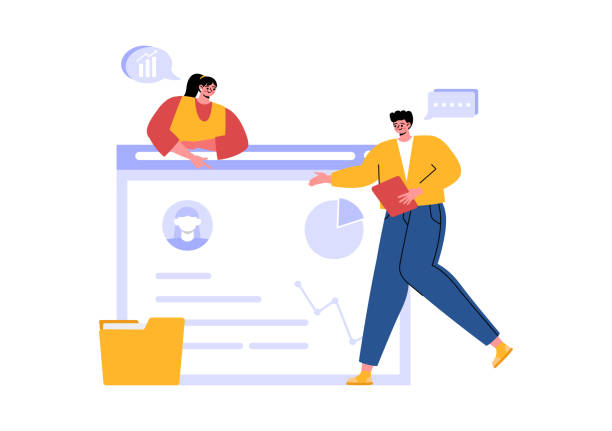
The success of a multilingual website is not limited to its technical aspects; the quality of its content and translation plays a vital role.
Mere word-for-word translation is not enough; you need localization.
Localization goes beyond translation and involves adapting content to the culture, idioms, traditions, and even the sense of humor of the target audience in each language.
Using native translators who specialize in your field of activity ensures accuracy and fluency of the content.
Machine or unprofessional translators can lead to embarrassing errors and damage your brand’s reputation.
Before starting the translation, develop a clear content strategy for each language.
Does all your site content need translation, or only key sections? Will you also produce exclusive content for each language? These decisions will impact the workload and costs.
Translation management is also important; you must have an efficient system for tracking different content versions and ensuring they are up-to-date in all languages.
Using Translation Management Systems (TMS) can facilitate this process.
Furthermore, paying attention to text formatting for different languages (such as right-to-left for Persian or Arabic, and left-to-right for English) and its adaptation to the site design is of great importance.
High-quality and localized content not only improves user experience but also increases your chances of ranking higher in local search engines for that language.
Frustrated with your e-commerce site’s low conversion rate? Rasaweb transforms your e-commerce site into a powerful tool for attracting and converting customers!
✅ Significant increase in visitor-to-buyer conversion rate
✅ Unparalleled user experience to boost customer satisfaction and loyalty⚡ Get free consultation from Rasaweb!
Search Engine Optimization (SEO) for Multilingual Website Design

SEO for a multilingual site has its own complexities, but if done correctly, it can lead to a significant increase in visitors from around the world.
The first step is keyword research for each language.
Simply translating English keywords into Persian or any other language is not enough; you need to consider what phrases native users of that language use to search for your products or services.
This might include colloquialisms or phrases that are not directly translatable.
After keyword research, On-Page SEO for each language version is essential.
This includes using keywords in the page title, meta descriptions, headings (H1, H2, H3), and main content.
The important point, as mentioned earlier, is the correct implementation of hreflang tags.
These tags tell search engines which version of the page is appropriate for which language and geographical region, and prevent duplicate content issues.
The appropriate URL structure (subdirectory, subdomain, or ccTLD) also plays a crucial role in multilingual SEO.
Additionally, your XML sitemap should include all language versions.
Off-Page SEO should also be performed for each language and target market.
Links from reputable and relevant websites in the same language increase your site’s authority in that market.
Optimizing site loading speed for all users, regardless of their geographical location and language, is also important.
Finally, continuous monitoring of the SEO performance for each language version and making necessary adjustments is key to long-term success.
User Experience and User Interface Design in Multilingual Websites
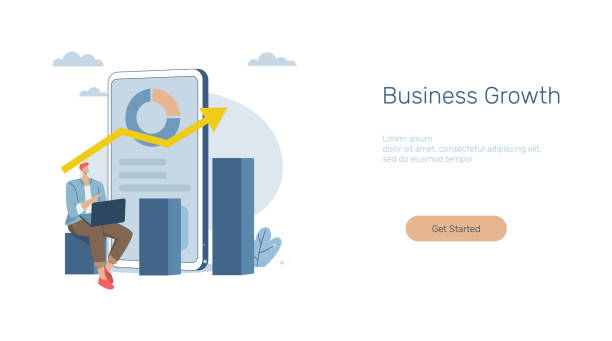
The most important factor in the success of any website, including a multilingual website, is User Experience (UX) and User Interface (UI) design.
These aspects have their own complexities in a multilingual environment.
The first point is simplicity and clarity in language selection.
A Language Switcher should be easily accessible and understandable.
Typically, this switcher is located in the header or footer of the site and is displayed as the language name (e.g., “فارسی”, “English”) or a country flag.
Avoid using flags alone, as one language may be spoken in multiple countries, and one country may have multiple official languages.
Furthermore, the design must be adaptable to different writing directions (right-to-left for Persian and Arabic, left-to-right for English and many other languages).
This includes the arrangement of elements, text alignment, and even the orientation of icons.
Choosing a suitable font that supports all characters of the target languages and has high readability is crucial.
Images and videos must also be culturally appropriate; what is considered harmless or entertaining in one culture may be inappropriate in another.
Colors also have different meanings in various cultures and should be chosen carefully.
Input forms, dates, currency, and measurement systems should also be localized to make users feel more comfortable.
Continuous user experience testing with native users of each language is highly important for identifying and resolving potential issues.
A multicultural and user-friendly web design not only attracts visitors but also converts them into loyal customers.
Tools and Platforms for Multilingual Website Design
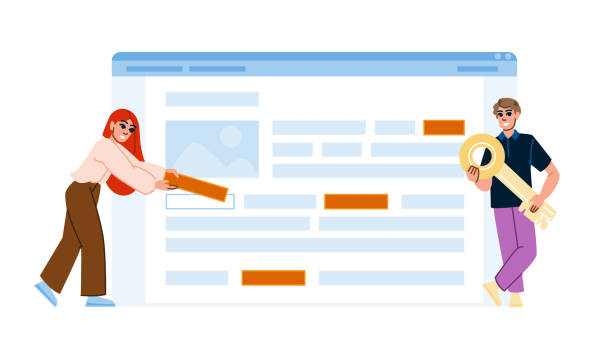
Choosing the right tools and platforms for multilingual website design can make a significant difference in the ease of management, costs, and scalability of your project.
Today, Content Management Systems (CMS) like WordPress, Drupal, and Joomla offer built-in or powerful plugins for multilingual support.
WordPress, with plugins like WPML (WordPress Multilingual Plugin) and Polylang, is the most popular option for many businesses.
WPML is a powerful plugin with extensive capabilities for translation management, multilingual SEO, and compatibility with various themes and plugins.
Polylang also offers a lighter and free option for managing different languages.
Drupal was designed with multilingualism in mind from the outset and has powerful native capabilities in this area, making it an excellent choice for large and complex projects.
Joomla also supports multilingualism and provides tools for managing translated content.
In addition to CMSs, specialized cloud services (SaaS) like Weglot and Localize.js are available, allowing you to quickly make your website multilingual without extensive programming knowledge.
These platforms typically offer automatic translation, human translation editing, and multilingual SEO tools.
For very large or specific projects, custom solutions may need to be developed using frameworks like React, Angular, or Vue.js, followed by the implementation of API-based translation systems.
The right tool selection depends on your budget, project size, your team’s technical level, and your business’s specific needs.
Before making a final decision, thorough research and comparison of each option’s features are essential.
| Tool/Platform | Type | Main Advantages | Usage |
|---|---|---|---|
| WPML | WordPress Plugin | High integration with WordPress, advanced translation management, SEO friendly | WordPress sites |
| Polylang | WordPress Plugin | Lightweight and free, suitable for small to medium projects | WordPress sites |
| Weglot | SaaS (Cloud) | Automatic and manual translation, easy installation, SEO friendly, supports various site types | Any type of website (WordPress, Shopify, etc.) |
| Drupal | CMS | High power and flexibility for native multilingualism, strong security | Large and complex projects |
| Joomla | CMS | Good built-in multilingual support, active user community | Various types of websites |
Challenges and Common Mistakes in Multilingual Website Design
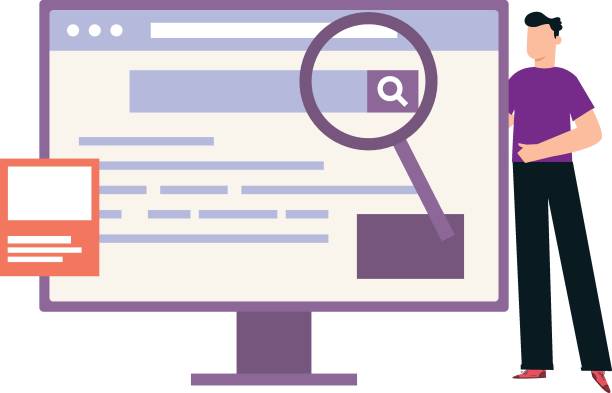
Despite the many advantages of multilingual website design, this process is not without challenges, and there are common mistakes that can jeopardize the entire project.
One of the biggest mistakes is poor or machine translation.
Using Google Translate or similar tools without review by professional native translators can lead to meaningless, humorous, or even offensive texts, which severely damages your brand’s reputation.
Another common mistake is neglecting multilingual SEO.
Some think that translating content is enough, but without correct implementation of hreflang tags, keyword research for each language, and proper URL structure, your site will not rank in local search engines.
Site speed is another challenge.
With an increase in content volume and potentially the use of different servers or CDNs for various regions, site loading speed might decrease, which harms user experience and SEO.
Insufficient localization is also a big mistake; simply translating text is not enough, attention must be paid to images, currency, dates, address formats, and even colors to make it appear completely natural to the native audience.
Ignoring continuous support and maintenance can also be problematic.
A multilingual website requires continuous content updates and management in all languages.
Furthermore, a lack of thorough testing of the site in all languages and across different browsers and devices can lead to the discovery of bugs and UX issues after launch.
To overcome these challenges, meticulous planning, the use of specialists, and sufficient investment at every stage of design and implementation are essential.
Is your e-commerce site ready to attract maximum customers and increase sales? Rasaweb transforms your online business with modern and efficient e-commerce website design.
✅ Increased speed and improved SEO
✅ Excellent user experience on mobile and desktop⚡ Get free e-commerce website design consultation from Rasaweb!
Maintenance, Updates, and Support for Multilingual Websites
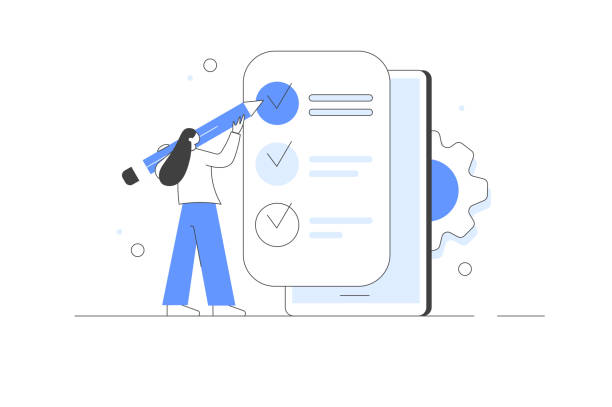
Launching a multilingual website is not the end, but the beginning of a new chapter of continuous maintenance and updates.
To ensure optimal performance and maintain site credibility over time, attention to these aspects is crucial.
The first point is content updates in all languages simultaneously or on a specific schedule.
If a new piece of news or product is added to the site, you must ensure that its translated versions are also quickly made available so that users of no language feel neglected.
This includes translating blog articles, product descriptions, service pages, and any other dynamic content.
Translation management is very important for maintaining consistency and integrity of terminology and tone across all languages.
Using Translation Memories and Glossaries can help with this.
Monitoring SEO performance for each language separately is also essential.
Are keyword rankings consistent across different languages? Is traffic from various geographical regions as expected? Web analytics tools like Google Analytics can assist in this regard.
Technical support for a multilingual website also has its own complexities.
You might need a support team fluent in different languages or utilize translation tools to communicate with international customers.
Furthermore, continuous monitoring of the site’s technical health, including loading speed, browser compatibility, and security, must be carried out to ensure a consistent and flawless user experience across all languages.
The Future of Multilingual Website Design and Emerging Trends

The future of multilingual website design is rapidly evolving, with new trends on the horizon that can significantly revolutionize user experience and efficiency.
One of the most important of these trends is the significant advancements in Artificial Intelligence (AI) and Machine Learning in the field of translation.
Neural Machine Translation (NMT) has already elevated translation quality to an unprecedented level and will soon be able to provide translations that are almost comparable to human translation, which will make the process of creating multilingual websites faster and more cost-effective.
Furthermore, with the expansion of voice search and smart assistants, optimizing websites to respond to voice queries in different languages will become increasingly important.
This means a better understanding of user intent and providing accurate, localized responses.
Personalizing content based on the user’s language, geographical location, and even cultural preferences is another emerging trend.
Websites will gradually be able to present content not only in the correct language but also in a way that aligns more with the cultural values and expectations of the audience.
Virtual Reality (VR) and Augmented Reality (AR) can also play a significant role in providing multilingual experiences in the future, especially in areas such as education, tourism, and e-commerce.
Multilingual website design is moving towards Serverless platforms and Microservices architectures, which provide greater scalability and flexibility for managing multilingual content.
Finally, with the increasing growth of emerging economies and wider internet access worldwide, the demand for multilingual and localized websites will continue to rise.
Frequently Asked Questions
| Number | Question | Answer |
|---|---|---|
| 1 | What is multilingual website design? | Multilingual website design means creating a website whose content is available to users in multiple languages. This is usually done through a simple user interface for changing the language. |
| 2 | Why should we design a multilingual website? | Multilingual website design helps you reach a wider audience worldwide, provide a better user experience for international users, and improve your global SEO. |
| 3 | What are the main methods for implementing multilingualism on a website? | The main methods include using subdomains, subdirectories, or URL parameters for each language, as well as using completely separate domains for each language. |
| 4 | For SEO, is it better to use a subdirectory or a subdomain? | From an SEO perspective, both subdirectories and subdomains can be effective. However, many SEO specialists prefer subdirectories due to better transfer of main domain authority. |
| 5 | What are the important tips for translating multilingual website content? | Translation should be done by native translators, content should be localized in addition to translation to align with the target audience’s culture, and pure machine translation should be avoided. |
| 6 | What is the role of the hreflang tag in multilingual site SEO? | The hreflang tag helps search engines like Google display the correct language and regional version of a page to the appropriate users, which also prevents duplicate content issues. |
| 7 | Is it possible to make a website multilingual without coding? | Yes, in Content Management Systems (CMS) like WordPress, powerful plugins like WPML or Polylang exist that allow you to make your website multilingual without needing to code. |
| 8 | What are the challenges of multilingual website design? | Challenges include translation management, content localization, adhering to SEO principles for each language, technical support for different languages, and ensuring design consistency across various languages. |
| 9 | What is the difference between translation and localization? | Translation is merely rendering words from one language to another, whereas localization involves adapting content to the culture, customs, currency, date and time formats, and even appropriate colors for the target audience. |
| 10 | What is the best User Experience (UX) for language switching? | A clear and accessible language switcher (usually in the header or footer), using language names instead of flags (due to regional variations), and maintaining the user’s position after changing the language are important UX considerations. |
And other services of Rasaweb Advertising Agency in the field of advertising
Smart Digital Advertising: An innovative platform to improve click-through rates with precise audience targeting.
Smart Sales Automation: An innovative platform to improve campaign management with marketing automation.
Smart Direct Marketing: Designed for businesses seeking digital branding through user experience customization.
Smart Sales Automation: A professional solution for digital branding focusing on intelligent data analysis.
Smart Direct Marketing: A combination of creativity and technology for user engagement through SEO-driven content strategy.
And hundreds of other services in the field of internet advertising, advertising consultation, and organizational solutions
Internet Advertising | Advertising Strategy | Advertorial
Sources
Comprehensive guide to successful multilingual website design on Toplearn
Advantages of multilingual sites on HostIran
How to design a multilingual website on Radis
Multilingual site SEO tips on Parsian Host
? To achieve peak success in the digital world, Rasaweb Afarin is your strategic business partner, offering comprehensive digital marketing services including secure website design and professional optimization. Transform your business’s future with us.
📍 Tehran, Mirdamad Street, next to Central Bank, Southern Kazeroun Alley, Ramin Alley, No. 6



